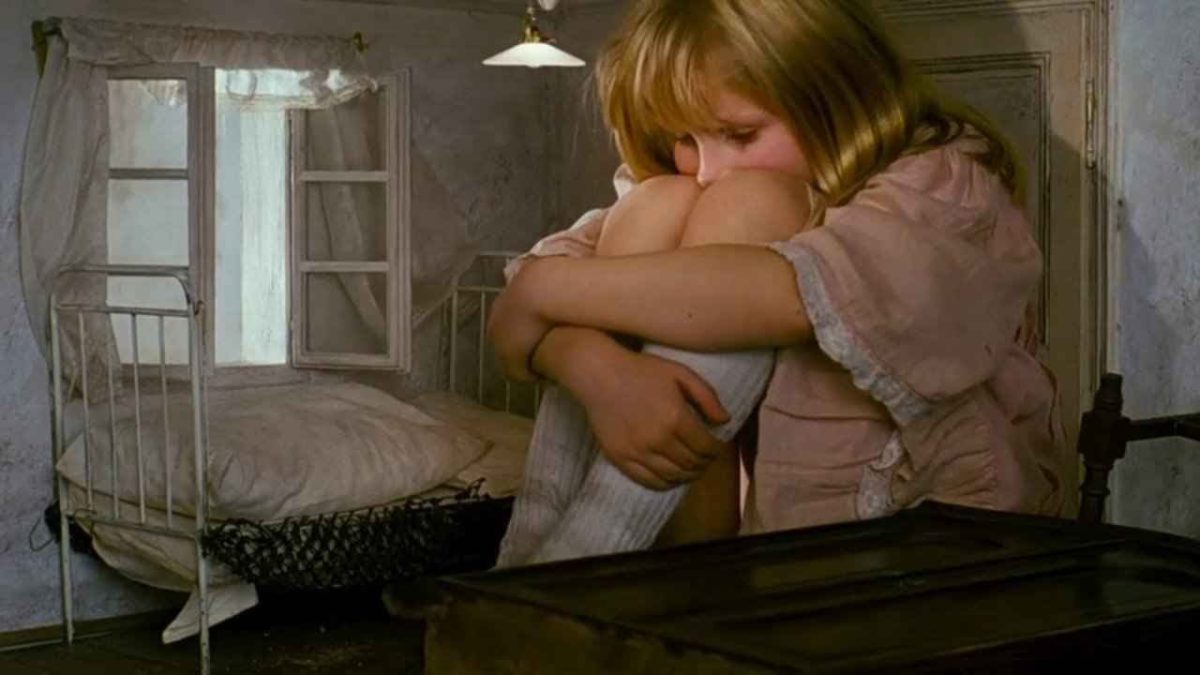I’ll start by admitting that I have never been a particularly big fan of Alice’s Adventures in Wonderland. For whatever reason Lewis Carroll’s influential brand of episodic whimsy has remained inaccessible and frankly kind of annoying to me. I just find the narrative and symbolism to be too chaotic to really engage me.
But it’s hard to conceive of a version of the story that I would be more primed to enjoy than Jan Švankmajer’s stop-motion tour de force, Alice. (The title technically translates from Czech to “Something like Alice,” which better suggests its offbeat tone.) This isn’t so much a verbatim adaptation as it is a re-imagination that remains textually fairly accurate but tonally divergent from the source. The whimsy has been stripped down to almost nothing, replaced instead by detached observation with flashes of visceral discomfort at Alice’s changing body and the off-putting world around her.

If you are not familiar with Švankmajer, as I was not prior to watching this film, he is a genius of the stop motion medium, crafting images that verge on body horror without ever quite becoming scary in the conventional sense. He applies a verbal minimalism, letting the visuals speak for themselves.
Part of what makes Alice so immersive is that all of the animation happens in a physical set with a human actor in the lead. Stop-motion and humanity in the same frame, making it all the more uncomfortable. This adaptation of the classic story takes place almost entirely around a decaying little cottage, with Alice the only human actor. The iconic Wonderland characters and companions are mostly made of re-purposed house products brought to vivid life: the caterpillar is a sock stuffed with wood chips; the rabbit is a piece of taxidermy, etc. It’s all tied together with a surreal — almost darkly serene — sense of physical space and tactile texture. The images are genuinely skin-crawling without being “scary” or “gross.”
Technically speaking, this is one of the most impressive stop motion films I’ve seen in my entire life. Every touch Švankmajer adds enhances the parasensory, almost synesthetic experience. Things move in uncanny and alien ways. Švankmajer constructs shots filled with optical illusions and funky mishmashes of materials, like nails sticking out of a slab of meat.

Where I struggle with Alice, though, is that the film doesn’t build so much as it just continues until its source material is depleted. Even with the brilliant, inventive visuals, I found myself getting just a bit antsy, checking my watch, in the film’s second half. I guess it circles back to my own personal issues with the original Carroll story — a lot of narrative exertion for not much payoff.
I also wonder if the film could have been even more potent had it found a coherent interpretation of the story. The opening act of the film suggests that Švankmajer’s reading of the text is that of sexual awakening and puberty parable, and there are certainly several moments that support this reading throughout the film (not least of which is the scene of phallic caterpillars). But most of the time Švankmajer seems content not to pry deeper into Alice’s head, but instead create a vaguely uncomfortable atmosphere with no other particular unifying objective.
So for me Alice is a memorable film and a great piece of stop-motion animation but not quite a masterpiece.
(Discussed at length with Gargus on The Goods.)
Is It Good?
Very Good (6/8)
Dan is the founder and head critic of The Goods. Follow Dan on Letterboxd. Join the Discord for updates and discussion.

